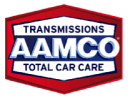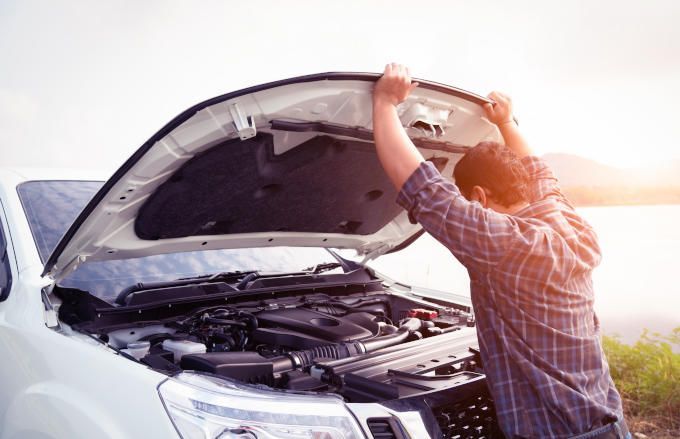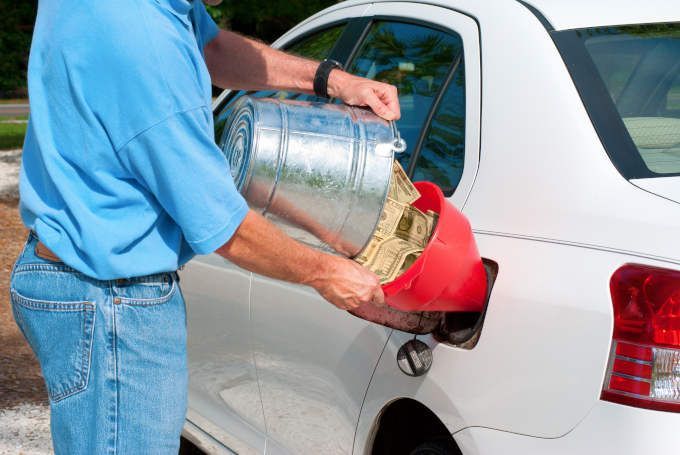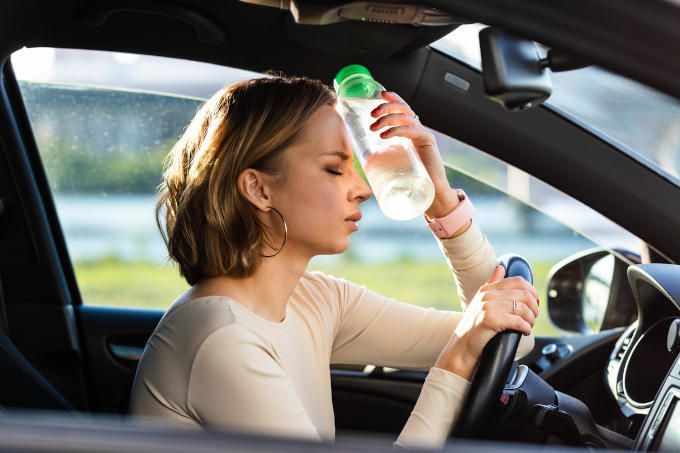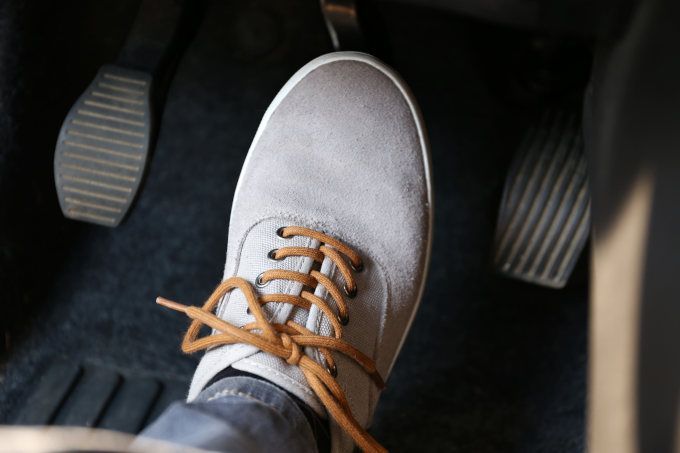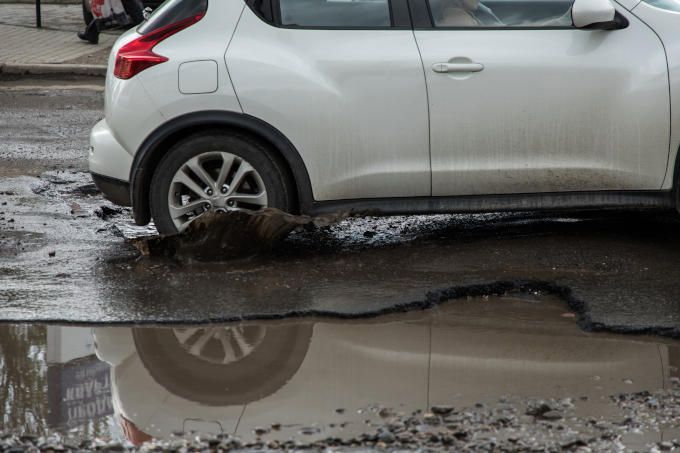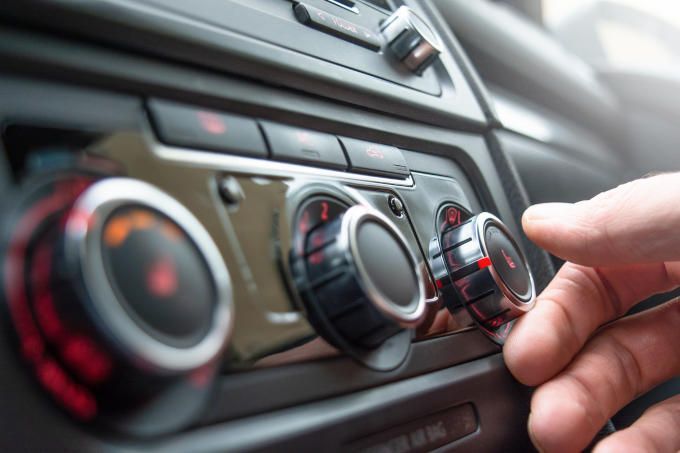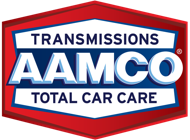Stay Safe Behind the Wheel: Winter Driving Tips
Cold-weather driving can be daunting and dangerous. Follow our easy tips to have safer winter journeys.
Winter weather is nothing to joke about when it comes to driving. Every year, over 1,300 people are killed, and more than 116,800 people are injured in vehicle crashes on snowy, slushy, or icy pavement, according to the Federal Highway Administration. However, there are many things you can do to prepare yourself for winter driving and many more things to keep you safe while on the road.
Know Your Vehicle’s Safety Features
Many vehicles are manufactured with features to help keep you safe when driving in challenging winter weather conditions. Know your vehicle's safety features and how they work, so you can use them to your benefit while driving.
- Traction Control System (TCS)—This function reduces your vehicle’s power and can apply brakes to the wheel with the least traction to keep your tire(s) from spinning if it detects decreased traction. Easing off the accelerator will further reduce the chance of tires spinning after TCS turns off. No matter how much you feel the need, if you are losing control, DO NOT slam on the brake pedal, as this may send your entire vehicle spinning out of control.
- Anti-Lock Braking System (ABS)—Most new vehicles are equipped with this system, which uses a computer to optimize your vehicle’s ability to brake more safely in extreme conditions. To activate, firmly press down the brake pedal and do not let up. The system will pulse or vibrate in the brake pedal to let you know it is working. Keep steering as needed to avoid obstacles, as the computer will adjust the braking for each wheel to minimize lockup while you maneuver.
- All-wheel drive (AWD) or 4-wheel drive (4WD)—Both AWD and 4WD provide traction to all four wheels instead of just two while accelerating, which can be helpful in snowy, icy, or wet conditions. Manual AWD is best for driving on the road during slippery and winter-like weather, while 4WD is best for off-roading and towing in snowy, icy conditions.
- Forward collision warning and automatic emergency braking—Vehicles with this feature will sense hazards in front of the vehicle to alert the driver for faster reaction time to avoid collisions. In addition, the automatic emergency braking will also slow or stop your vehicle to help prevent an accident if possible.
Always Be Prepared
Aside from regular prescribed check-ups and winter vehicle maintenance, keep in mind these additional tips to prepare yourself and your vehicle prior to hitting the road in cold weather. Start with packing an emergency kit. This kit should always have these items for the winter:
- Ice scraper
- Blankets
- Extra coats, hats, and gloves
- Snow shovel
- Sand or kitty litter to get your wheels unstuck in the snow
- Phone chargers
- Water and food
Practice Safe Driving Habits
The best way to travel safely during winter weather is to avoid driving at all, but if you must get on the road during snowy or icy conditions, follow these driving habits to make sure you get from point A to point B with little to no trouble:
1. Increase your following distance
Slowing down and stopping are much harder on slick roads, so give yourself plenty of space between your vehicle and the one ahead of you and pay attention to those who tailgate. If you have a tailgater, pull over and let them pass before it becomes a problem.
2. Fill up the tank
Keep your gas tank full as often as possible for regular gas-powered and hybrid vehicles. For electric vehicles, keep them fully charged by plugging them in at night.
3. Check the weather
Before you leave on any trip, check weather and traffic reports along the route you plan to take. Make sure the route is safe and well-lit for driving, and always give yourself a little extra time to get from one place to another.
4. Beware of snowplows
While these vehicles are necessary for clearing the roads, they can be dangerous if you follow them too closely. They are slow, make wide turns, and stop and exit the road often. Use extreme caution if you decide to pass one or one is passing you—or going the other direction. Give them plenty of space.
5. Decrease your speed
Vehicle traction is much worse in icy conditions, so be sure to slow down carefully and do not accelerate suddenly when driving in rain, sleet, snow, or ice.
6. Do not use cruise control.
Cruise control does not know when conditions are slippery and is less likely to react as quickly as you can if you feel a loss of traction, especially when encountering ice or snow.
7. Minimize distractions.
Refrain from talking on the phone, eating food, or any other activity that may take your focus away from the road whenever you drive, especially during harsh weather. Icy weather requires your full attention.
8. Do not idle
Idling your vehicle to warm it up in the cold is no longer necessary and just wastes gas. It is more efficient to drive your vehicle to warm it up rather than let it idle. Unattended, idling vehicles are more susceptible to theft.
What To Do When You Are Stuck in Snow
Smart driving habits also include knowing how not to damage your vehicle when stuck in the snow. Here are two tips:
- Do not spin your tires
Spinning your wheels can cause your vehicle to become more stuck by digging it deeper into the snow. Spinning tires can also cause your transmission to overheat, which can cause immediate, severe damage. Softer parts, such as seals, gaskets, and clutches, can also fail when a transmission overheats. Other things can happen, including damaged tires, suspension, and driveline parts, and fractures in smaller components that will worsen over time. - Do not rock your vehicle
It is not recommended to rock your car to get it out of the snow. Doing so can damage your vehicle's transmission, tires, and suspension. It can also strain and damage your transmission and engine mounts. If your engine mounts are not securing the engine, other components, like your radiator and fan, can be damaged.
What to do instead: If your vehicle is stuck in the snow, it is usually better to try to clear the snow away from the tires and under the vehicle and use sand or kitty litter to help provide traction. Do this with the vehicle off and the parking brake engaged. If these methods do not work, it may be necessary to call for roadside assistance or to wait until the snow has melted or been cleared.
Know What To Do in Emergencies
No matter how much preparation and safe driving you do, sometimes emergencies are inevitable. Knowing what to do if you are stuck or stalled in the cold is just as important.
1. Stay in your vehicle
The more you open and close doors, the colder it will become inside the vehicle. If you are in blizzard conditions, it will also be easy to get lost if you wander from your vehicle.
2. Make your vehicle visible
Add bright markers or reflective stickers to your antenna and windows and keep your interior light on.
3. Carbon monoxide danger
Be sure your exhaust pipe is clear of snow, and only run your vehicle long enough to warm yourself up. Do not run it for extended periods when windows are up or if the vehicle is in an enclosed space—this can cause carbon monoxide to get into the cabin.
Prepare Your Vehicle with Us!
As you prepare for another season of wintry driving, bring your vehicle in for a winter check-up. We will ensure your vehicle is ready to take on all that Jack Frost has to throw at it so you can get to your destination safely. Call one of your local Tri-state AAMCO Centers today!
Expect the Best
AAMCO has over 55 years of experience delivering total car care, from the transmission to tune-ups, for more than twenty million vehicles. Customers depend on us for:
- Exceptional customer service
- The latest technology for diagnosis and repair
- Expert technicians who “fix it right the first time.”
- Best warranty coverage available
- Convenient payment options with up to 12 months of interest-free payments and plans for less-than-perfect credit
AAMCO Centers of the NY/NJ/CT Tri-State Area represent trust, quality, and value. If you are having an issue with your vehicle, call us today!
Share
RECENT BLOG POSTS
MORE FROM US
Content and images on this website may not be reproduced without explicit permission.
Please contact
PW Media for additional details.
All Rights Reserved | AAMCO Transmissions Inc.
Transmission and Total Car Care in NY, NJ, and CT
AAMCO Tristate
AAMCO Tristate
Transmission and Total Car Care in NY, NJ, and CT
AAMCO Tristate
Transmission and Total Car Care in NY, NJ, and CT
